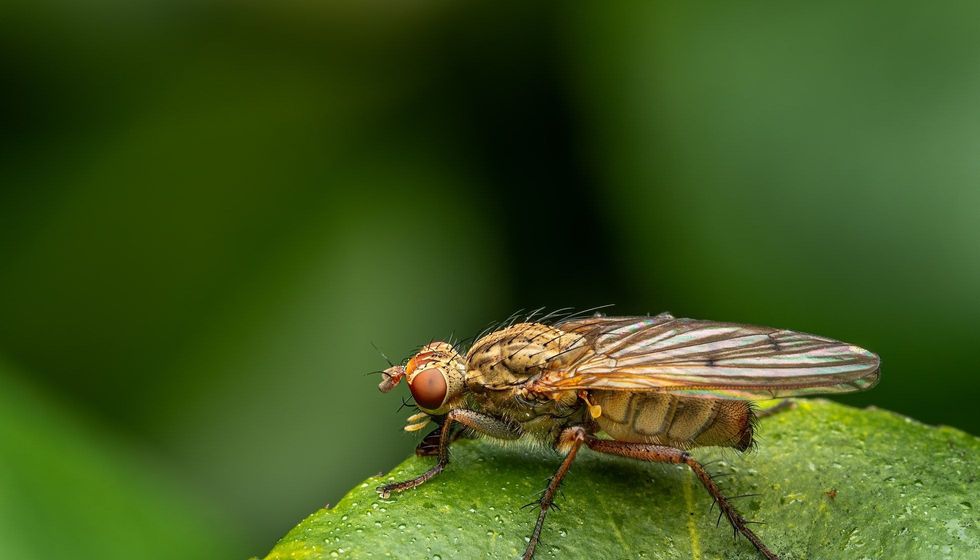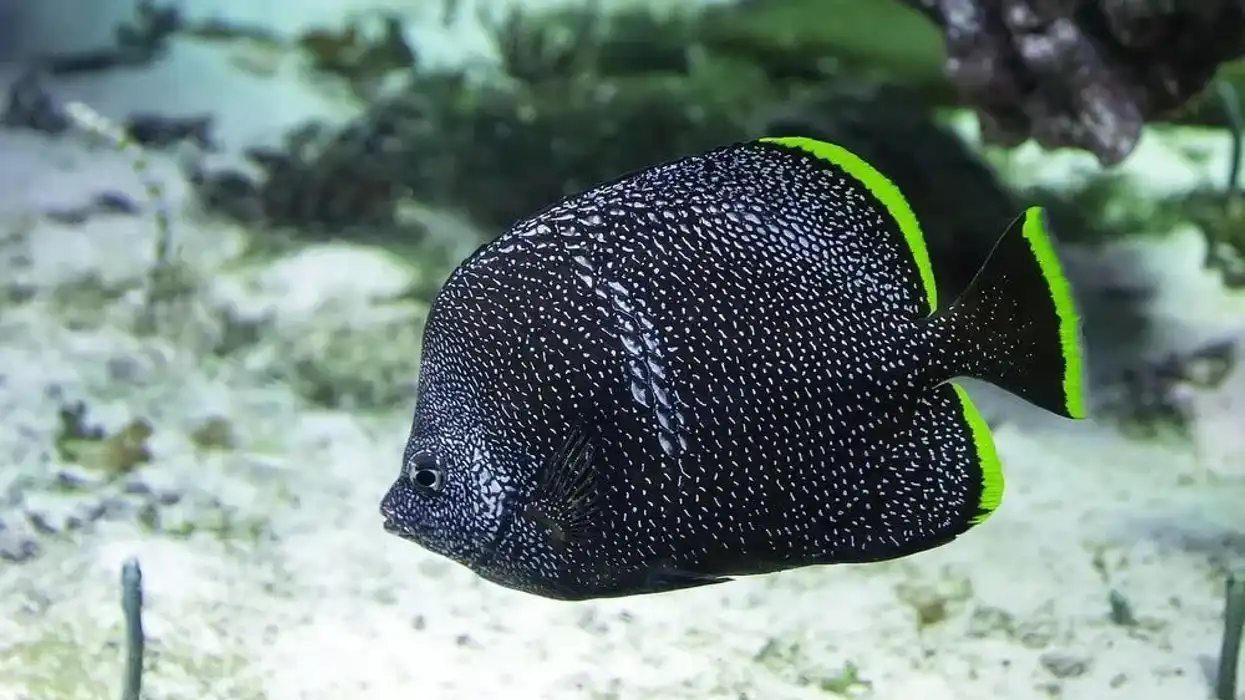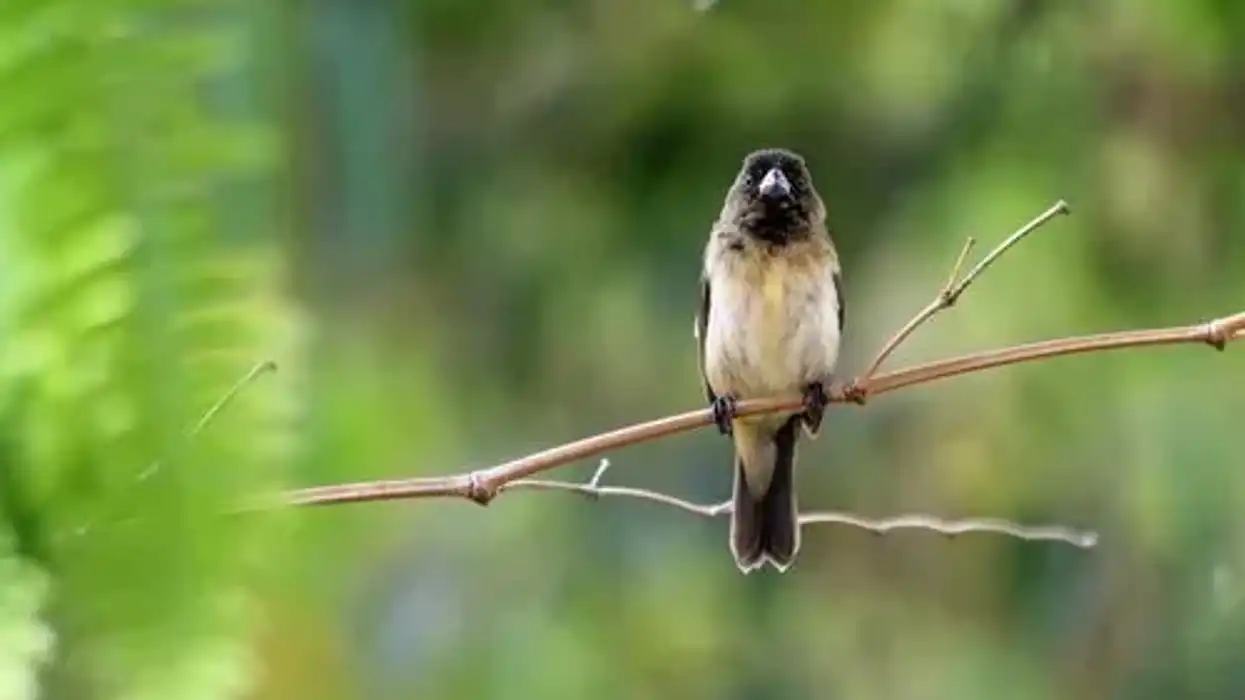The kelp fly, or seaweed fly, refers to the Coelopidae family of flies found near the coastline which feed mainly on dead and decaying seaweed. They can be found among sandy beaches and coasts near the sea all over the world, mostly in temperate and tropical areas.
They belong to the fly order Diptera, with the Coelopidae family containing around 40 species of kelp flies.
Though these flies are quite harmless, they tend to swarm together when attracted to the smell of decaying organic matter, such as the remains of animals, food waste, or rotting plants.
Since they occur mostly near the sea, they are a common sight on a trip to the beach and are considered a nuisance, disrupting picnics, and swarming around people.
These small flies can be easily identified by their small, dark bodies which are covered with prickly bristles. They look similar to the common housefly but have flatter bodies and smaller eyes.
They are important to the ecosystem, providing natural disposal of washed-up seaweed and algae as well as acting as a food source for many semi-aquatic and coastal birds such as terns, seagulls, and storks.
To learn more about these marine flies, read on! For more relatable content, check out these botfly beetle facts and Mydas fly facts for kids.
Kelp Fly Interesting Facts
What type of animal are kelp flies?
Kelp flies are a type of seaweed fly belonging to the order Diptera. The most commonly occurring species of kelp fly is the Coelopa frigida.
What class of animal do kelp flies belong to?
Seaweed flies belong to the class Insecta.
How many kelp flies are there in the world?
As there are around 12 genera of kelp fly and a total of 40 species in the order Diptera, it is not possible to record the exact number of kelp flies occurring in the wild, as they are very common in nature.
Where do kelp flies live?
These fly species have a widespread range and can be found all over the world.
What is a kelp fly's habitat?
Seaweed flies are mostly found around temperate shorelines and on beaches. The ideal kelp fly habitat is in close proximity to decaying brown and green algae along the sandy beach shore, which they are dependent on for breeding and feeding purposes.
Who do kelp flies live with?
Seaweed flies can usually be found in large swarms around the coastline, normally seen hovering around or sitting on dead and decaying seaweed. Since they breed among seaweed as well, kelp fly larvae occur in masses among marine seaweed and algae, feeding on the bacteria present among them.
How long do kelp flies live?
The lifespan of the Coelopa frigida kelp fly is around 30 days, from the larva stage to the fly stage. Other kelp fly species have a similar lifespan, with each monthly high tide causing havoc among a different population of flies and larvae living among the wrack.
How do they reproduce?
Not much is known about the actual breeding process of these seaweed flies. Breeding goes on throughout the year, with a new batch of eggs being laid by the previous generation every month.
Female flies can lay their eggs, around four to five clutches of around 80 eggs each, among the rotting seaweed and algae banks on the sandy beach, which hatch into larvae within 12 days.
These larvae feed on the bacteria and decaying mass among the vegetation and transform into fully grown flies in search of mates before the month is up. They live, grow, and die within a span of just 30 days.
What is their conservation status?
As there are around 40 species with a large population of kelp flies in each one, there is no data on the conservation status of the seaweed fly is. The IUCN has Not Evaluated these species.
Kelp Fly Fun Facts
What do kelp flies look like?
Kelp flies are similar in appearance to other fly species. They are small to medium in size, with black or dark brown flat and thick bodies. Their body is usually covered in dense and prickly hair, also dark in color.
They have small eyes and unmarked, translucent wings. Their six legs are long and jointed, also covered with prickly bristles. In most species, the male is generally larger in size than the female.
How cute are they?
Seaweed flies cannot be considered as cute. They do not have any attractive features and are too small to see properly. Being swarming insects and known to feed on bacteria and decaying algae, they are considered to be unhygienic pests.
How do they communicate?
Like other flies, kelp flies can communicate with each other by rubbing their legs or wings together to send vibrations through the air. They can also do this through the surfaces they are against, by rubbing their legs against it and creating tremors that are picked up by any flies who are near.
How big are kelp flies?
Diptera kelp flies have been observed to measure in the range of 0.2-0.3 in (4-8.5 mm).
How fast can kelp flies move?
Though the speed of flight of the kelp fly is unknown, we can compare it to the flight of the common housefly, which flies at a speed of 4.3 mph (7 kph). Due to their small size and tiny wings, they cannot cover such large distances.
How much do kelp flies weigh?
There is no information on how much these flies weigh. As they are similar in size to the common fly, we can assume that they weigh in at the same weight which is 0.0001-0.002 oz (2-45 mg). Since they are minute creatures, their weight is almost negligible.
What are the male and female names of the species?
There are no specific names for either sex of this species, they are simply called male or female kelp flies.
What would you call a baby kelp fly?
Depending on which stage they are in their life cycle, baby kelp flies can be called larvae, pupae, or maggots.
What do they eat?
True to their name, seaweed flies feed on dead or rotting seaweed and algae among the wrack that is normally washed ashore by the high tides. They may also try to eat any food waste or decaying organic matter. The larvae feed on the bacteria among the seaweed washed ashore.
Are they harmful?
Seaweed flies are not dangerous to humans and will not bite. As they are herbivorous in nature, they will stay away from humans and other creatures.
However, they are attracted to decaying matter and may fly towards food or waste material. Unlike houseflies, they are not known carriers of diseases such as E. coli, however, large swarms of these flies can form which can prove to be quite annoying when you are trying to enjoy a relaxing day at the beach.
A virus from adult kelp flies termed the kelp fly virus has been found in the larvae of other insect species such as the wax moth, though, it is not known to be dangerous to humans.
Would they make a good pet?
No, kelp flies cannot be kept as pets. They are small insects that feed on dead and decaying natural matter and can be considered unhygienic.
They cannot be kept anywhere or trained, and since they feed only on algae and seaweed, they cannot be domesticated as they need to live in the coastal wrack only. Trying to breed and tame seaweed flies may form a kelp fly infestation in one's home which can be quite annoying.
Did you know...
Kelp flies are also called seaweed flies or kelp cormorant flies. Cormorants refer to a family of aquatic birds and one of the chief predators of the kelp fly.
Seaweed flies are actually an important part of the ecosystem and their numbers are contained by predator birds such as shorebirds, pipits, flycatchers, and seagulls.
These flies play host to a number of insects, forming a symbiotic relationship with a number of beetles, wasps, and other fly species which develop by consuming kelp fly larvae. Each parasite tends to use a specific genus of kelp fly as a host, making these relationships quite complex.
The Coelopa frigida is the most commonly found and researched species of kelp fly and can be found mainly in the Northern Hemisphere.
Kelp flies have been observed to be waterproof as their shiny exoskeleton provides them with protection against drowning in the ocean. They simply bob up and down in the water until they return to the shore, rejoining the sandy wrack.
What is the relationship between kelp flies and seaweed?
Seaweed is a naturally abundant source of food available along the seashore for kelp flies. These flies are known to primarily feed on rotting seaweed and algae, even laying their eggs among the sandy wrack.
The seaweed washed ashore provides both a source of food as well as a shelter. This means kelp flies are naturally attracted to seaweed as they feed on decaying matter. Due to this, they are also called seaweed flies.
How do you keep kelp flies away?
Kelp flies cannot be avoided on a trip to the beach. Naturally present among the wrack, they are attracted to any rotting organic matter to feed on.
They can be kept away by avoiding bringing food to the beach, avoiding the generation of any waste, and staying away from the washed-up seaweed on beaches. Large swarms of these flies can be chased away by spraying insect repellant or bug spray.
Here at Kidadl, we have carefully created lots of interesting family-friendly animal facts for everyone to discover! Learn more about some other insects from our paper wasp fun facts and crane fly interesting facts pages.
You can even occupy yourself at home by coloring in one of our free printable fly coloring pages.









